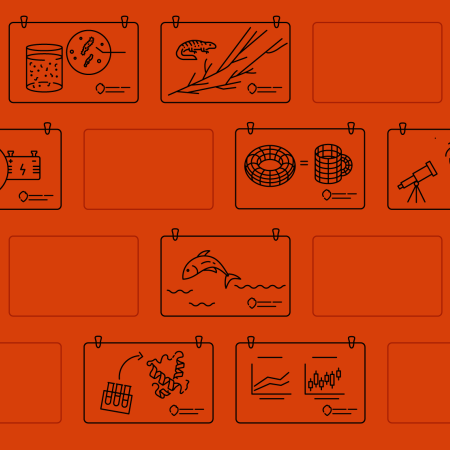Offered for the first time this spring, Statistics 437: Data Visualization (ST 437) has quickly proved itself to be a valuable addition to the Statistics Department curriculum. The ST 437 course introduces core principles of data visualization — covering design, perception, and communication with an emphasis on both ethical design and practical application. Using statistical programming tools such as R and RStudio, students learn the art and science of storytelling with data. Course instructor, Erin Howard recommends this course to, “Any student looking to build on their R programming experience and improve their ability to understand and communicate data visually.”
Some students may feel intimidated by courses that require programming abilities, and while ST 437 does require some familiarity with R (ST 314, 351, or 411 are recommended prerequisites); the course’s design results in novice programmers greatly expanding their abilities in just one term. Students such as Biological Data Science major Ngoc Le found that the way ST 437 assignments challenged students to learn led them to, “Appreciate R a lot now. In my previous stats classes, I just needed to tweak the example R code that the instructor provided a bit to do my homework, but in this class, I had no choice but to write my own code.” Other students appreciated that it taught them skills such as data cleaning which they had not encountered in their previous coursework.
ST 437 is the kind of class where the more you invest, the more rewarding the outcome. Part of what motivates students to work hard in ST 437 is their ability to tailor their coursework to their own interests. This opportunity provides students with a clear vision of how they can apply what they learned in the classroom to the real world. Sophomore, Sophia Wind shares, “As a student of Public Policy, being able to navigate R studio will help me perform analysis of my own data and allow me to incorporate visualizations into my future research. ST 437 taught me how to create visualizations with any data set, which is something I can't wait to include on my resume.” Psychology major, Addy Pierce also appreciated that ST 437 allowed her to focus on data types common in her field. For example, Addy recognizes that, “Likert data is extremely important in the field of psychology…” and the ability to visualize this data correctly is necessary for the psychology field’s, “Validity and accuracy of research.”
Throughout the term, students worked on individual projects that culminated in a final showcase at the end of the quarter. Rather than traditional oral or poster presentations, the end of the year symposium featured interactive tools such as Shiny apps that allowed audiences to explore datasets long after the initial presentation was over. These projects not only demonstrated analytical skill, but also highlighted how data can be used to engage, inform, and communicate in dynamic ways.







